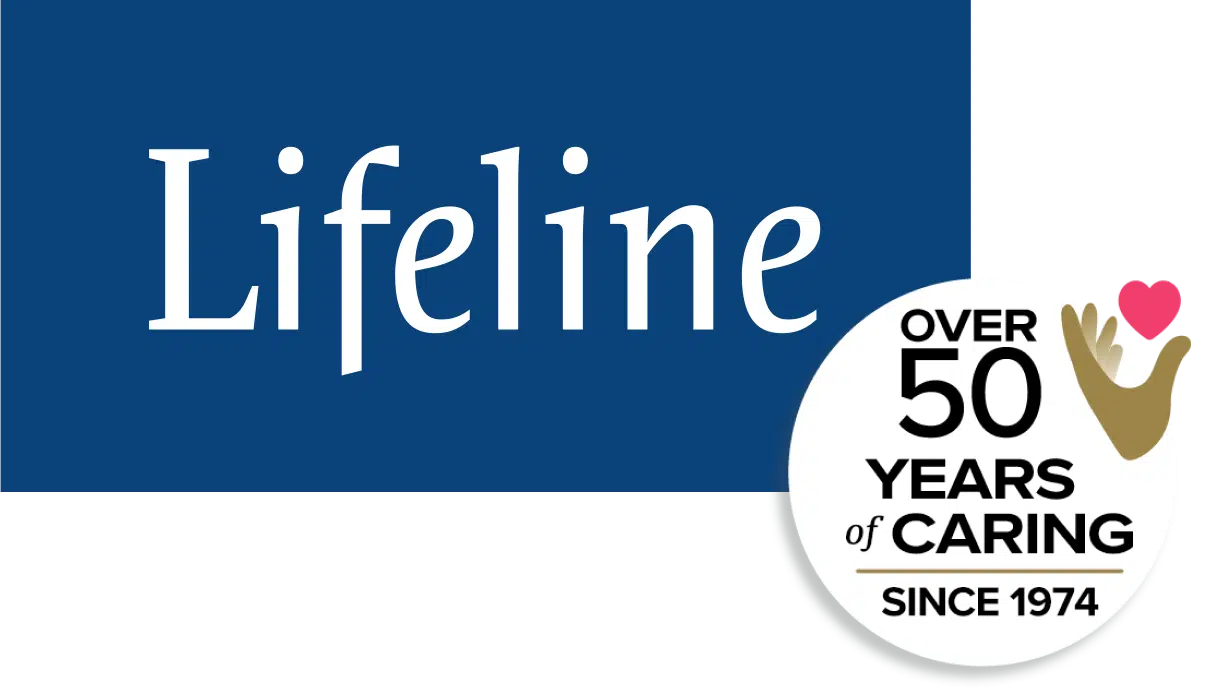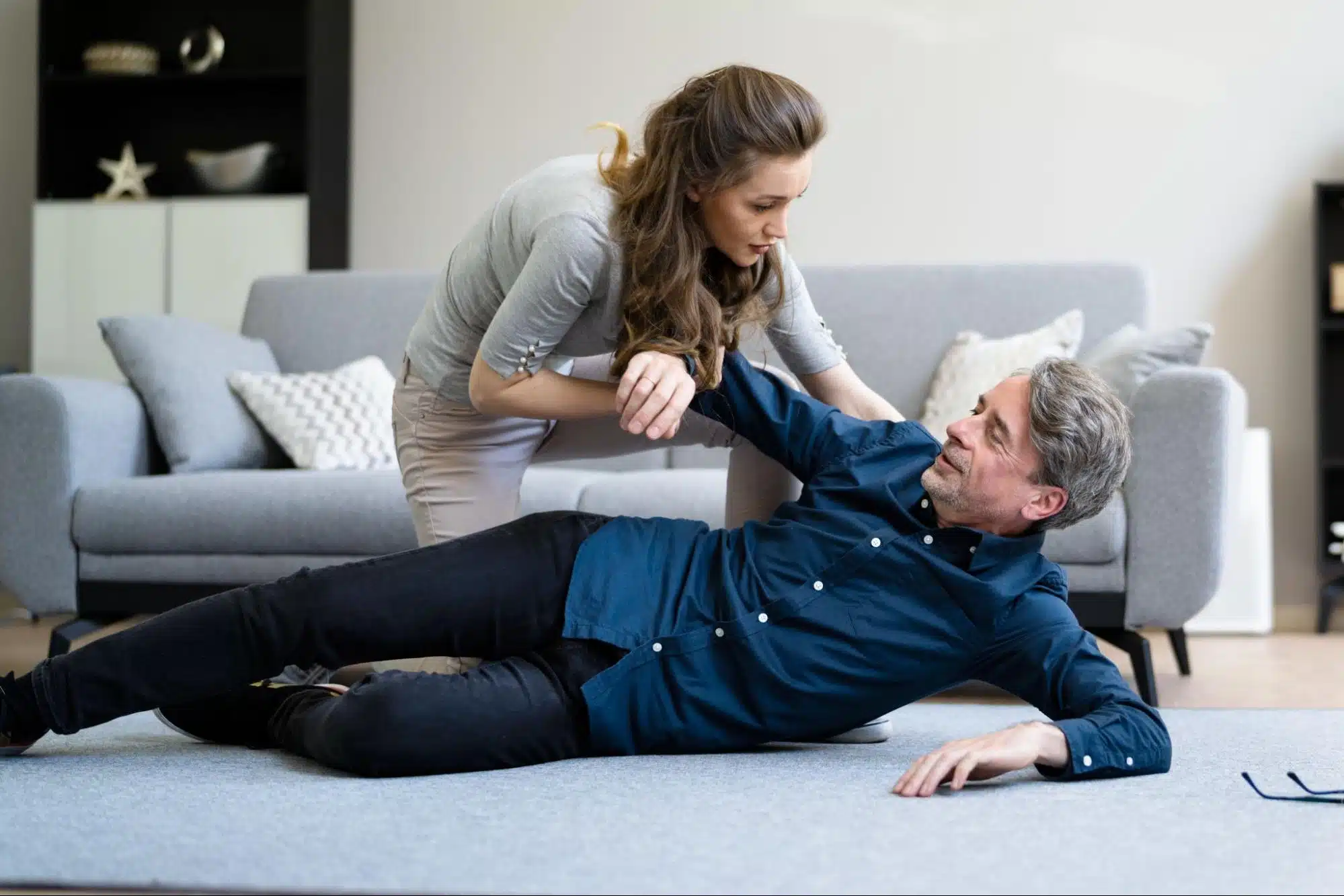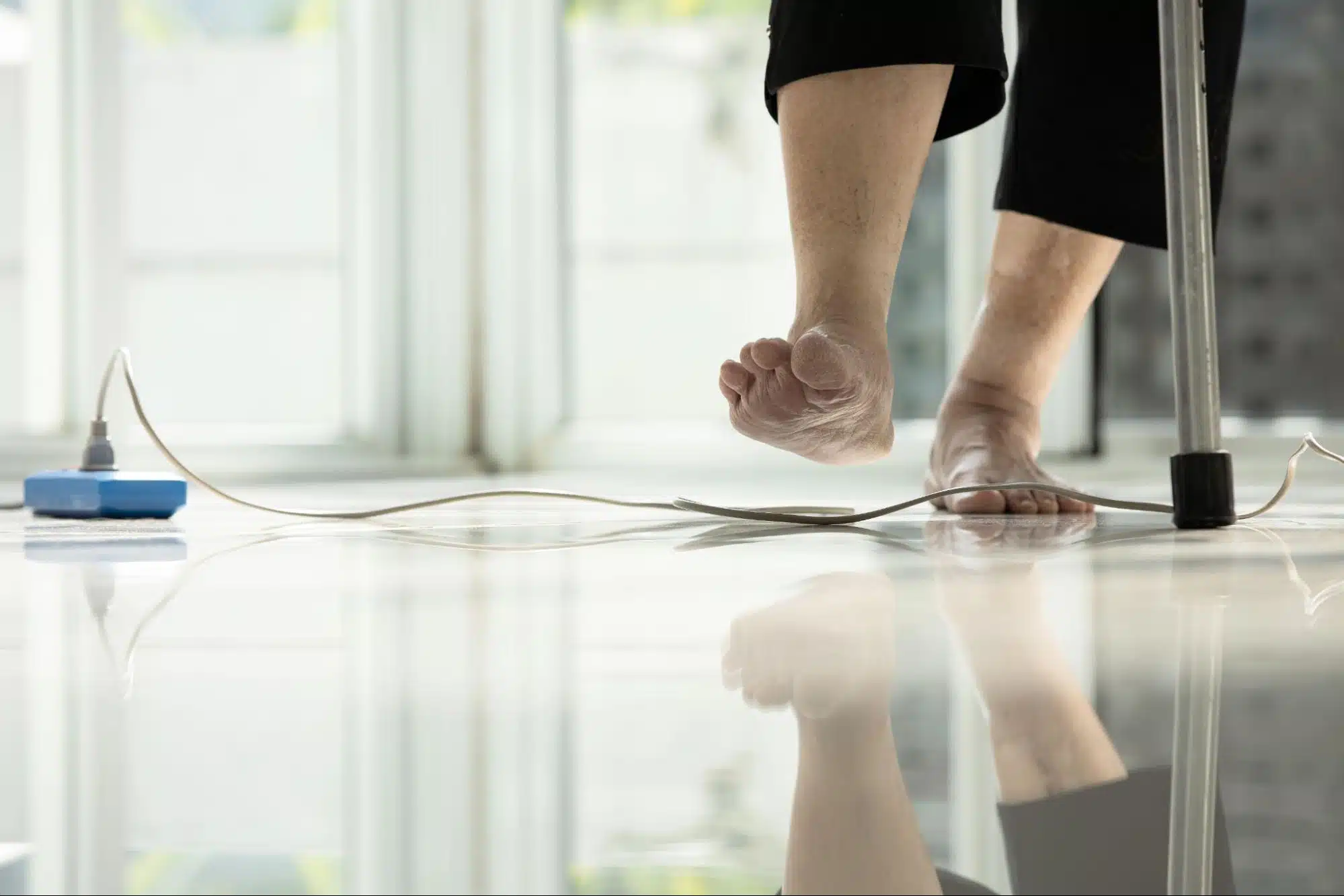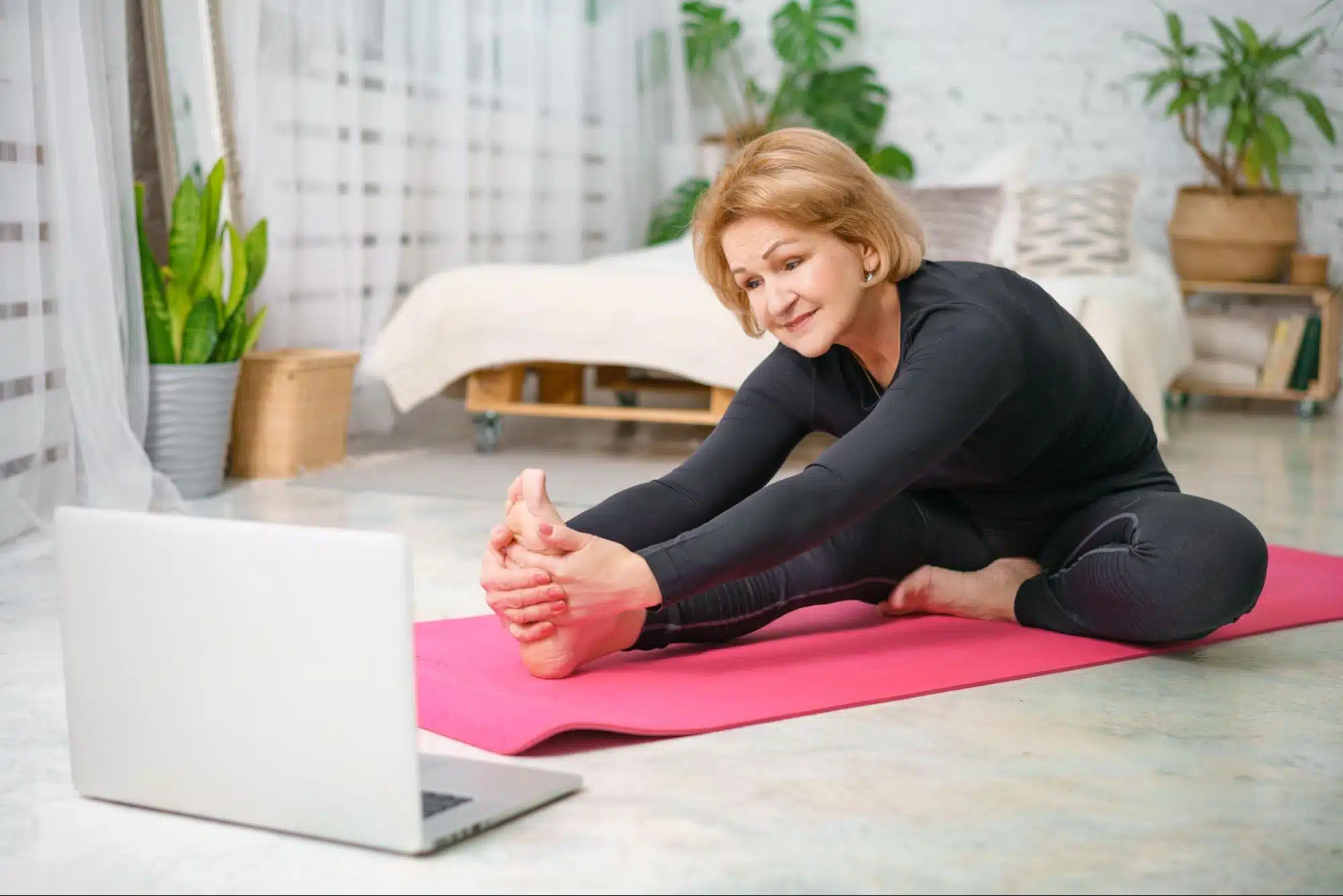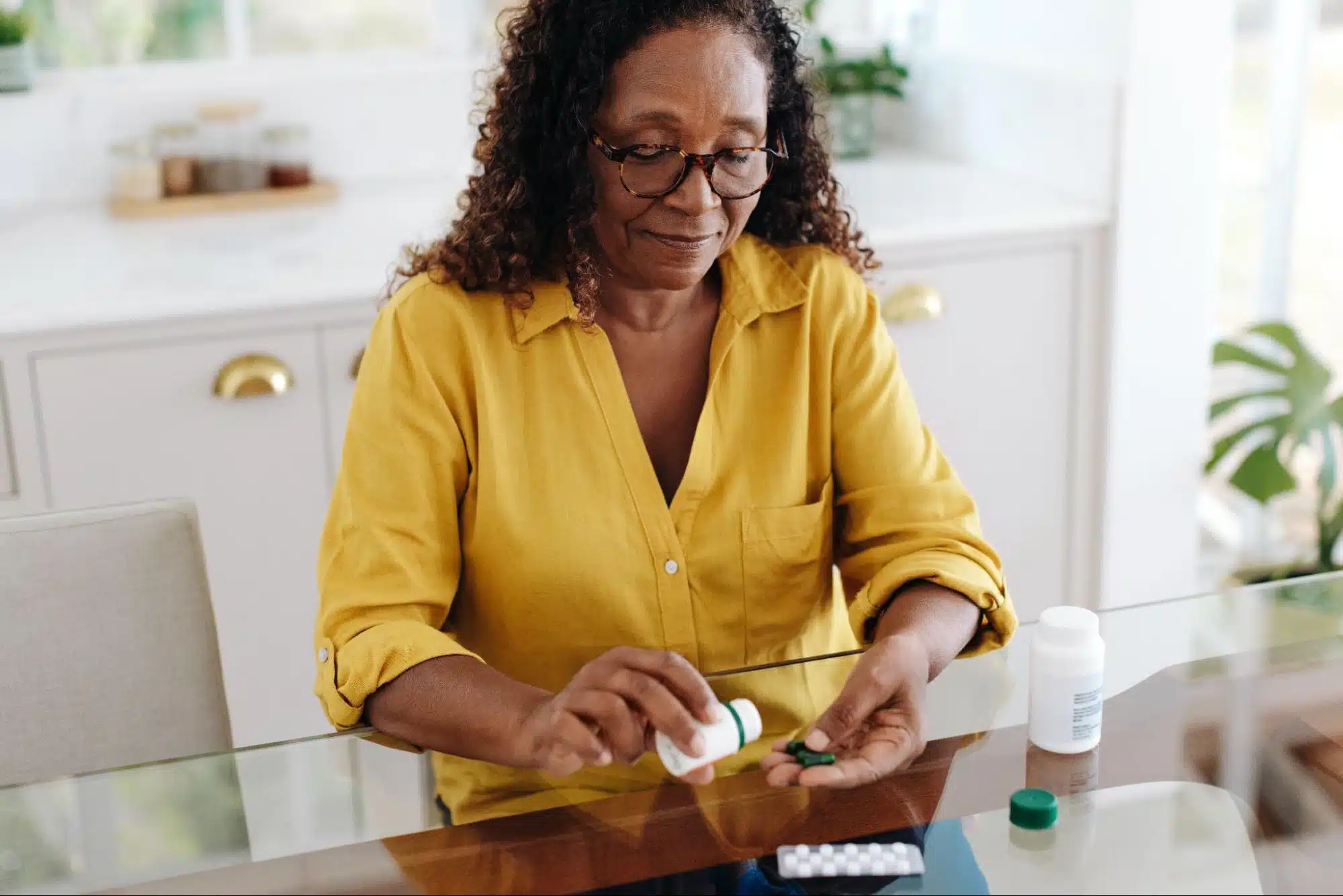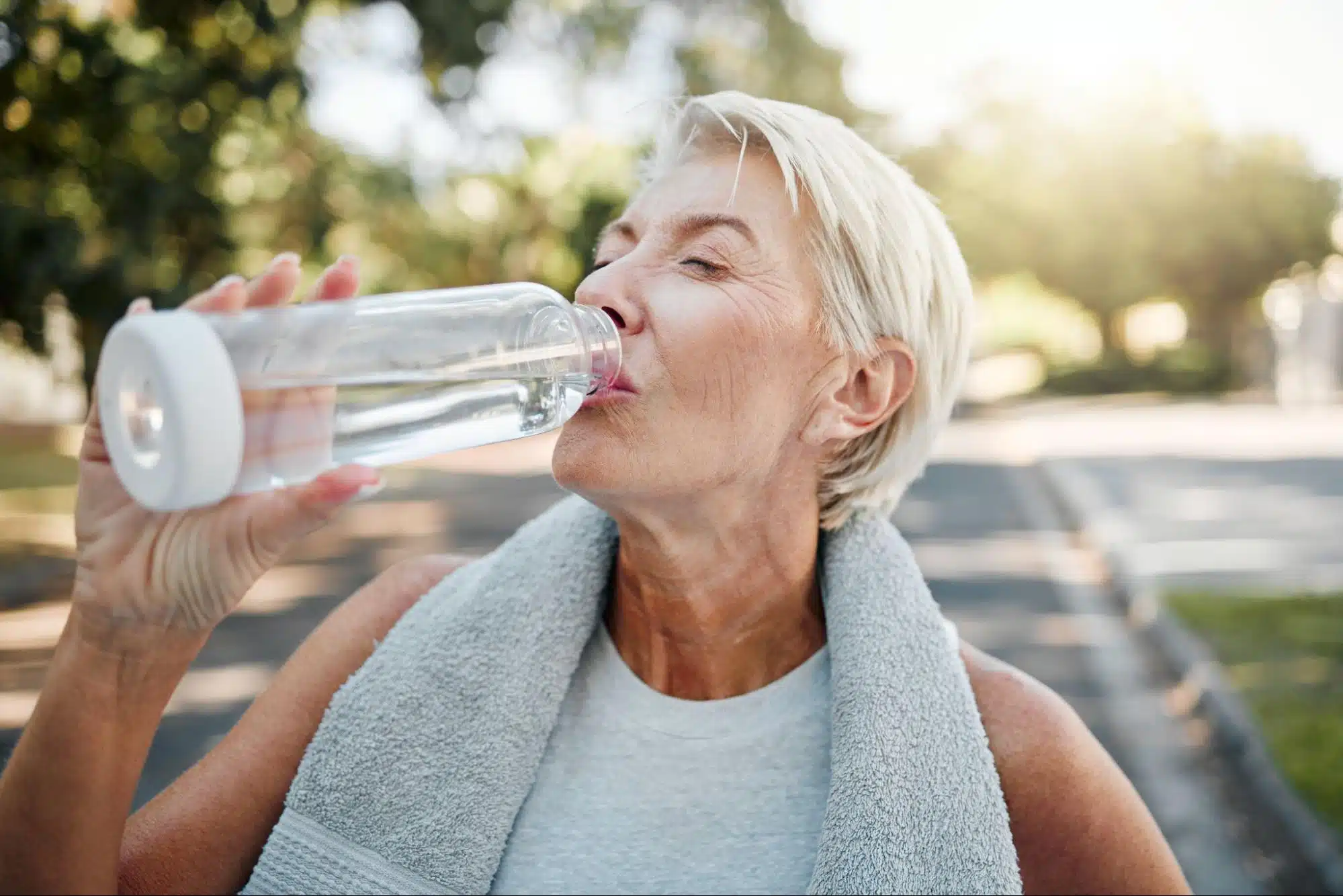Most seniors expect to live an independent, active lifestyle throughout their retirement years. But for some, their independence can be jeopardized by a fall. Each year, approximately one of every three people over the age of 65 will experience a fall. In some cases, the injury sustained can make living independently in their own home more difficult.
But there are preventative steps you can take that will reduce the likelihood of a fall. By reducing these potential hazards, you can protect yourself and your independence.
1. Staircases
Staircases present one of the biggest falling hazards, contributing to a leading common cause of falls in the elderly. Going down or up the stairs causes the body’s weight and centre of gravity to shift with each step, making it easier for someone to lose balance.
How to Prevent Falls on Staircases
- Handrails: Ensure that your staircase has a securely installed handrail at the proper height. A handrail that is too low or high can put a person slightly off balance and be of little assistance in stabilizing a fall. When you walk down or up the stairs, always hold onto the handrail for stability.
- Remove or secure hazards: Keep stairs free of clutter and objects that can become tripping hazards. When the treads and landings are clear, the stairs are easier to navigate because there is more room to place the foot securely. Loose rugs or mats can also be a tripping hazard because they slide around. Remove these from landings and at the top or bottom of the staircase to prevent slips.
- Use a basket or bag: If you frequently carry objects from floor to floor in your home, consider keeping a basket or bag on a table near the stairs to carry these things. Whatever style of container you use, ensure it is lightweight and allows you to hold the handrail as you ascend or descend. Instead of carrying objects up and down the stairs, it might be a good idea to have one of those items on each floor. For example, if you use a cane, consider keeping one upstairs and a second one downstairs.
- Pace yourself: Take your time when going up or down the stairs. While you may occasionally be in a hurry, slowing down and taking a few extra moments to ascend or descend will keep you safe.
2. Wet Floors
A wet floor reduces the amount of contact between the floor and a shoe’s sole, meaning it’s more likely for slips and falls to occur. These falls most likely happen in areas where spills are common, such as the bathroom or kitchen.
How to Prevent Falls Due to Wet Floors
- Take precautions: Install grab bars in the bathroom to get in or out of the shower or tub. Also, use only non-slip mats in the kitchen and bathroom.
- Clean up spills quickly: When spills occur, clean up the liquid immediately. Keep a long-handled mop—preferably with an absorbent sponge head—nearby so you don’t have to get on your hands and knees to wipe the spill. If you are unable to clean up, avoid the area until someone else can do it.
3. Inadequate Lighting
You know your home best, but no matter how many times you’ve walked from one end to the other, shadows and poor lighting can become a hazard by making it difficult to see objects in your path.
How to Prevent Falls Due to Inadequate Lighting
- Replace lightbulbs: Survey the lights in your house and replace all burnt-out bulbs. Use the maximum wattage light bulb for the fixture to ensure good illumination. In places where the lighting is dim, consider installing another fixture or using a lamp.
- Organize cords: The cords to all lamps should be tucked away safely and securely under furniture or against the wall. An exposed cord can get tangled in your feet, causing a fall. This is true for all electrical cords—keep them secured away from any walking paths. Also, avoid putting electrical cords under throw rugs, especially in the pathways through rooms. The cords create an uneven surface, which can be a tripping hazard.
- Use night lights: Install night lights throughout your home, especially in hallways, bathrooms, and bedrooms. A night light with built-in sensors will turn on automatically whenever the amount of light drops below a certain level, including on overcast days.
4. Fatigue
Everyone experiences fatigue or tiredness now and then. But what often gets overlooked are the effects of fatigue. When you are tired, you could experience slowed reflexes, dizziness, or a lack of coordination. These physical effects of fatigue could increase the risk of a fall because they disrupt your sense of balance and ability to recover from a slight slip or trip.
How to Prevent Falls from Fatigue
- Take time to rest: Sitting down for a while or taking a short nap can help restore your physical capabilities. Once you feel more alert, you can resume your activities more confidently.
- Check your medications: Sometimes, fatigue can be caused by medications. If this symptom persists, speak with your medical doctor.
5. Lack of Exercise
Seniors who do not get adequate exercise can experience weakened muscles and a loss of balance, conditions that can increase the risk of falls. In some cases, the fear of falling causes people to reduce their activity levels, which can further increase the risk.
How to Prevent Falls Due to Lack of Exercise
- Regular exercising and training: Studies have proven that regular, moderate exercise helps to significantly reduce the risk of falls by increasing muscle strength and improving balance. Moreover, regular exercise helps to improve overall health and energy levels.
- Take a fitness class: While joining a gym may not be of interest for you, there are a range of fitness classes designed specifically for seniors at most community centres. Gardening, walking, and simple stretching exercises might be more in tune with your lifestyle. The key is to be active regularly.
- Talk to Your Doctor: Whatever activity you choose, consult with your healthcare provider before beginning to ensure the activity or program is suitable for you.
6. Vision Impairment
Maintaining visual acuity is paramount for navigating the world safely, particularly as we age. Vision impairment significantly contributes to the risk of falls among seniors. Diminished eyesight can obscure obstacles and hazards, making them more difficult to detect.
Seniors experiencing vision impairment face challenges not only in identifying obstacles but also in accurately judging distances and depth perception. This can lead to missteps, especially in environments with varying elevations or uneven surfaces. Furthermore, conditions such as glaucoma and cataracts can cause visual disturbances that further exacerbate the risk of falls.
How to Prevent Falls Due to Vision Impairment
- See your optometrist: Regular eye examinations and prompt treatment of any vision-related issues are essential preventative measures.
- Wear corrective eyewear: Using corrective lenses or vision aids prescribed by an optometrist can improve visual clarity and aid in hazard detection.
- Enhance lighting where possible: Add additional lamps and motion lights throughout living spaces to improve visibility and reduce the likelihood of falls.
7. Medications
Many seniors rely on medications to manage various health conditions, but certain medications, such as diazepam (Valium) and lorazepam (Ativan), can have side effects that increase the risk of falls. Factors such as dizziness, drowsiness, and impaired coordination are common adverse effects associated with numerous prescription drugs. Although this is a common cause of falls among the elderly, some might not consider the overall impact of medications on their everyday lives.
How to Prevent Falls Due to Medications
- Understand side effects: It’s crucial for seniors to discuss potential side effects with their healthcare providers and be vigilant for any signs of medication-related impairment. Adjustments to medication regimens or alternative treatment options may be necessary to mitigate this risk.
- Communicate symptoms: The effects of medication-related impairment on fall risk can vary widely depending on the type and dosage of medications prescribed. Sedatives, antidepressants, and medications for hypertension are among the most common culprits associated with increased fall risk. Seniors should proactively communicate with their healthcare providers about any changes in symptoms or adverse effects experienced while taking medications.
- Monitor over-the-counter medications: In addition to prescription medications, over-the-counter drugs and supplements can also contribute to fall risk, particularly when combined with other medications.
- Consult with medical professionals: Seniors should exercise caution when self-medicating and consult with a healthcare professional before starting any new medications or supplements. Pharmacists can provide valuable insights into potential drug interactions and side effects, helping seniors make informed decisions about their medication regimens.
8. Uneven Surfaces
Navigating uneven surfaces poses a significant challenge for seniors, particularly those with mobility issues. Uneven pavements, cracked sidewalks, and uneven flooring within the home can easily trip individuals and lead to falls.
- Clear paths: Regular maintenance of outdoor pathways and indoor flooring is essential to minimize risks. Ensure paths are swept often and cleared of debris, including snow and ice.
- Install handrails: Where possible, consider securing handrails and grab bars to walls or the exterior of homes. Doing so in areas prone to uneven surfaces can provide additional support and stability, reducing the likelihood of falls.
- Consider home modifications: Indoor environments such as thresholds, transitions between flooring materials, and raised door sills can pose significant challenges. Seniors should prioritize home modifications to address these hazards, including installing ramps, stairlifts, and threshold ramps to facilitate safe navigation.
9. Obstacles and Clutter
A cluttered environment presents numerous hazards for seniors, increasing the risk of trips and falls. Objects left in pathways, loose rugs, and tangled cords pose significant dangers. Within homes, this is one of the most common causes of falls in the elderly.
- Organizing your home: Maintaining an organized living space and removing clutter from walkways can greatly reduce the risk of falls.
- Use storage: Implementing storage solutions for commonly used items that are left out can help keep areas clear of obstacles.
10. Rushing and Multitasking
In today’s fast-paced world, the tendency to rush and multitask is common among individuals of all ages. However, for seniors, this behaviour can significantly increase the risk of falls. Dividing attention between multiple tasks diminishes focus and awareness of one’s surroundings, making falls more likely.
Seniors may feel pressure to rush or multitask due to perceived time constraints or competing priorities. However, attempting to perform multiple tasks simultaneously can compromise balance and coordination, increasing the likelihood of falls.
- Develop a routine: Encouraging seniors to prioritize tasks, take their time, and focus on one activity at a time can help mitigate this risk.
- Focus on one task at a time: Seniors should be encouraged to adopt mindful practices that promote present-moment awareness and focused attention on individual tasks.
11. Poor Posture
Maintaining good posture is essential for balance and stability, particularly in older adults. Poor posture can strain muscles, impair coordination, and increase the risk of falls. Seniors can be susceptible to poor posture due to age-related changes in muscle strength, joint flexibility, and spinal alignment.
- Strengthen muscles: Exercising promotes posture awareness and strengthens core muscles, which can help improve balance and reduce the likelihood of falls.
- Ergonomic updates: Ergonomic adjustments, including cushions, to furniture and workspaces can encourage proper posture and minimize strain on the body.
- Stretch regularly: Prolonged sitting or standing in awkward positions can exacerbate postural imbalances and contribute to falls. Seniors should prioritize activities that promote spinal alignment, such as stretching exercises, yoga, and tai chi, to improve posture and enhance overall balance and stability.
12. Nutritional Deficiencies
A balanced diet is crucial in maintaining overall health and well-being, including muscle strength and bone density. Nutritional deficiencies, particularly in vitamins D and B12, can contribute to muscle weakness, fatigue, and impaired balance, increasing the risk of falls. Seniors are at increased risk of nutritional deficiencies due to factors such as decreased appetite, impaired absorption of nutrients, and medication interactions.
- Eat well: Deficiencies in vitamins D and B12 are particularly common among older adults and can result in a range of adverse health effects, including muscle weakness and neurological symptoms. Seniors should prioritize foods rich in these vitamins, such as fortified dairy products, leafy greens, and lean meats, to support musculoskeletal health and reduce fall risk.
- Consult a dietician: Seniors should strive to maintain a nutritious diet of essential vitamins and minerals. Consulting with a healthcare provider or registered dietitian can help address any nutritional deficiencies and promote optimal health.
13. Dehydration
Dehydration can profoundly affect physical and cognitive function, particularly in older adults. Inadequate hydration can lead to dizziness, weakness, and confusion, all of which increase the risk of falls. Seniors are more susceptible to dehydration due to age-related changes in fluid balance, thirst perception, and kidney function.
- Hydrate often: Seniors should prioritize proper hydration by drinking an adequate amount of fluids throughout the day, particularly in hot weather or during physical activity. Monitoring urine colour and frequency can help assess hydration status, with pale yellow urine indicating sufficient hydration.
- Monitor health-related symptoms: Chronic medical conditions such as diabetes, kidney disease, and heart failure can further increase the risk of dehydration and its associated complications. To maintain optimal hydration levels, seniors should aim to consume at least eight glasses of water per day, in addition to fluids obtained from fruits, vegetables, and beverages.
Reducing the Risk of Falls with Lifeline Devices
In addition to the actionable recommendations we’ve covered in this post, we encourage you and your loved ones to examine the possibility of adding a medical alert system to support your safety. Knowing that help is a push of a button away if a fall does occur, allows you to remain active and independent. Some of our devices, including On the Go, also offer automatic fall detection if you can’t push the button on your wristband or necklace for help after a fall. This feature can offer even greater peace of mind if you have experienced a fall or are at increased risk of one.
Protecting Yourself from Common Causes of Falls
Incorporating these preventative measures into daily routines can significantly reduce the risk of falls and promote independence and well-being among seniors. By addressing potential hazards, maintaining physical health, and seeking appropriate medical guidance, seniors can enjoy a safer and more active lifestyle.
To learn more about how Lifeline devices can support those at risk for falls, reach out to us today.
What You Should Do Now:
Here are 5 ways we can help you or your loved one live safer and more independently at home as long as possible:
- Get our latest tips, tools and resources straight to your inbox. Sign up for our monthly newsletter.
- Not sure if the time is right for a medical alert service? Take this quick assessment to find out.
- If you would like to learn how to live a healthier and safer lifestyle, go to our blog or visit our resources section, where you can read and download guides.
- Wondering which medical alert system company is the best for your needs? We’ve put together a guide comparing the best medical alert systems for you.
